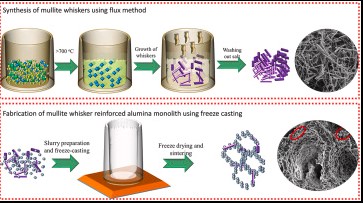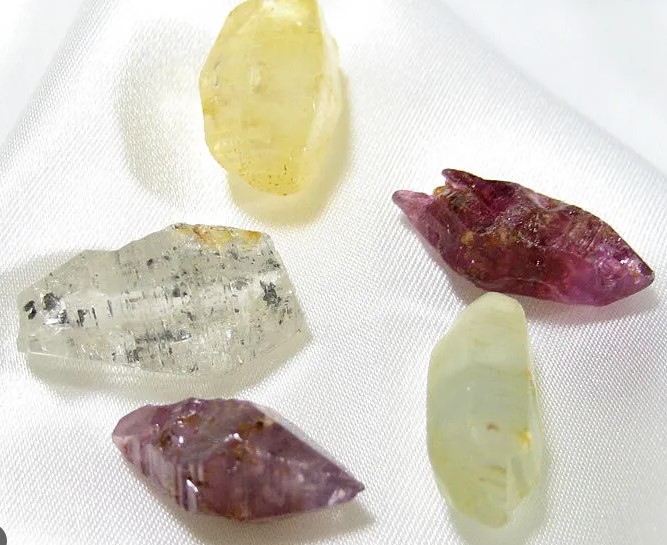Alumina and corundum are two closely related minerals that are often confused for each other. In this blog, we will discuss the differences between these two materials, their unique properties, and how they are used in various industries. We will also explore how their production and usage have changed over time and what implications this has for the future.
We will also explore how their production and usage have changed over time and what implications this has for the future.
Historical and geographical origins of alumina and corundum

Alumina and corundum are two compounds that share a very similar chemical composition and physical properties, yet have drastically different historical and geographical origins. Alumina, also known as aluminum oxide, is a naturally occurring compound found in soil and rocks. Corundum, on the other hand, is a man-made compound created by melting alumina and other materials together at extremely high temperatures.
Corundum, on the other hand, is a man-made compound created by melting alumina and other materials together at extremely high temperatures. While corundum is significantly harder than alumina, it is also more brittle, making it less ideal for certain applications. The difference between these two compounds lies primarily in their origins: alumina is a naturally occurring mineral, while corundum is a man-made material.
Chemical and physical properties of alumina and corundum

Alumina and corundum are both minerals, but they have distinct chemical and physical properties. Alumina, also known as aluminum oxide, is an ionic compound composed of aluminum and oxygen. It is one of the most abundant minerals on the planet and is widely used in the manufacturing of alumina-based ceramics and abrasives.
Corundum, on the other hand, is an oxide of aluminum and an allotrope of aluminum oxide. It is most commonly found as the mineral ruby, but can also exist in sapphire and a few other rare minerals.
Corundum is harder than alumina and is used in the production of abrasives and jewelry. The key difference between alumina and corundum is that alumina is more abundant and less expensive than corundum.
Uses of alumina and corundum

Alumina and corundum are both minerals with many uses. Alumina is an oxide of aluminum, with the chemical formula Al2O3, and it is the most abundant mineral in the Earth’s crust. Corundum is also an oxide of aluminum, but with the chemical formula Al2O
Corundum is also an oxide of aluminum, but with the chemical formula Al2O However, the difference between the two is that corundum has a higher concentration of aluminum, which makes it harder and more durable. Alumina is used for a variety of industrial applications including abrasives, refractory materials, and ceramics.
Corundum is mainly used to make industrial abrasives, such as sandpaper and grinding wheels. Corundum is also the second-hardest natural material, after diamond, and is used to make jewelry, gemstones, and even watch faces. While both materials have important uses in industry, corundum is the more valuable of the two.
Differences between alumina and corundum
When it comes to understanding the difference between alumina and corundum, it’s important to remember that although both materials are mineral compounds, alumina is actually the chemical name for aluminum oxide and corundum is the chemical name for crystallized aluminum oxide. The difference between the two is in the crystallization process.
Alumina is a mineral compound of aluminum oxide that is not crystallized, while corundum is a crystallized form of aluminum oxide. The crystallization process creates a very hard and durable material, making corundum tougher and more durable than alumina. Corundum is also more heat resistant than alumina, making it ideal for industrial and commercial use.
In conclusion, the difference between alumina and corundum is that alumina is not crystallized while corundum is. Corundum is also more durable and heat resistant, making it the preferred choice for industrial and commercial use.
Summary of alumina and corundum
The terms alumina and corundum are often used interchangeably, but they are actually two different substances. Alumina is an oxide of aluminum and is the primary component in aluminum ore.
It’s a crystalline solid which is often used in the production of aluminum, ceramics, and other industrial products. Corundum, on the other hand, is a crystalline form of aluminum oxide. It is a hard, durable material that is used in abrasive materials and in the production of synthetic gems.
The difference between alumina and corundum lies in their composition and structure; alumina is composed of aluminum and oxygen, while corundum is composed of aluminum, oxygen, and other elements. Both materials are extremely durable and have a wide range of applications.
Conclusion
In conclusion, the main difference between alumina and corundum is that alumina is an oxide of aluminum, while corundum is a mineral composed of pure aluminum oxide. Alumina is a general term used to describe any compound containing aluminum and oxygen, while corundum is a specific mineral composed of aluminum oxide.
Alumina is generally found in a variety of products such as ceramics and electronic components, while corundum is found in abrasives and jewelry. Both alumina and corundum are extremely hard and durable materials, making them useful for a variety of applications.

